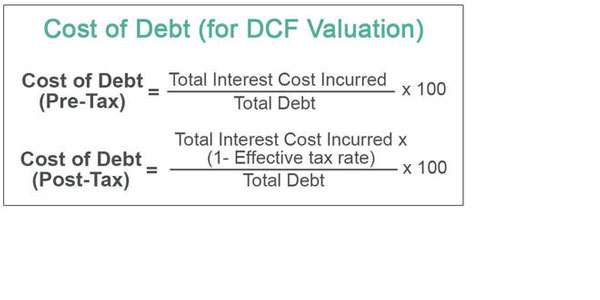National Pension System Subscribers: 10 Key Insights They Should Know
Triston Martin
Dec 13, 2023
The Pension Fund Regulatory and Development Authority (PFRDA) has recently revised the National Pension System (NPS) withdrawal regulations. These modifications enable participants to withdraw their lump sum amount in phases, offering more flexibility in managing retirement funds. Additionally, the PFRDA has introduced a mandatory 'penny drop' verification process for withdrawals from the NPS.
This step is designed to enhance the security and accuracy of transactions, ensuring the funds reach the correct account. The penny drop verification involves a test transaction of a nominal amount to confirm the authenticity of the account details provided by the subscriber. This measure aims to safeguard the national pension system NPS subscribers' interests and prevent fraud.
Systematic Lump Sum Withdrawal
The Pension Fund Regulatory and Development Authority (PFRDA) has recently introduced the Systematic Lump Sum Withdrawal (SLW) option for subscribers of the National Pension System (NPS). As outlined in PFRDA's circular from 27 October 2023, this initiative enables NPS subscribers to withdraw their pension savings in a phased manner.
The SLW facility breaks away from the traditional approach of binding retirees to an annuity for their entire post-retirement life. This flexibility empowers subscribers to determine the amount and timing of their withdrawals according to their needs.
Archit Gupta, Founder and CEO of Clear, highlighted the benefits of this new facility, emphasizing its utility in scenarios where retirees might require a more significant sum of money for specific purposes. The introduction of SLW marks a substantial shift in how retirees can manage their pension funds, offering them increased control and adaptability in their financial planning.
Withdrawal Options

Under the new regulations set by the PFRDA, National Pension System (NPS) subscribers now have the liberty to withdraw up to 60% of their pension corpus through the SLW method.
This withdrawal can be scheduled monthly, quarterly, half-yearly, or annually, based on the subscriber's preference at their normal exit from the pension system. Subscribers can plan their finances until they are 75 with flexibility. This regulatory change gives national pension system NPS subscribers more retirement fund management independence, which is crucial.
It meets the changing needs of retirees who need to access their funds at different times. PFRDA's decision shows a growing understanding of retired people's financial needs, ensuring they can use their pension funds as needed.
Mandatory 'Penny Drop' Verification
To improve transaction security and accuracy, PFRDA requires 'penny drop' verification for National Pension System (NPS) subscribers withdrawing funds.
This checks subscribers' bank account information for accuracy and legitimacy. A small amount is transferred to the subscriber's bank account to verify its presence and ownership in the 'penny drop' procedure. This prevents fraud and ensures pension funds reach the rightful recipient.
This extra security measure shows PFRDA's commitment to NPS subscribers. Additionally, it strengthens the National Pension System as a reliable retirement savings scheme. This measure protects the pension fund ecosystem's integrity and confidence despite adding a step to the withdrawal process.
NPS Exit Requests
The penny drop verification is essential for the National Pension System (NPS) to process bank account changes and withdrawals/exits.
The Pension Fund Regulatory and Development Authority (PFRDA) stresses that this procedure requires a precise match between the subscriber's name and bank account information. The National Pension System NPS relies on bank account verification to ensure subscriber validity and activity.
The PFRDA uses this method to improve the National Pension System's financial transaction security and precision. This prevents errors and fraud and ensures subscribers' funds are handled carefully.
Instant Bank Account Verification
As of October 25, 2023, the National Pension System (NPS) has introduced a mandatory instant bank account verification policy. This policy, highlighted by Amit Gupta, MD of SAG Infotech, is specifically for advance withdrawals and exiting the NPS scheme.
The goal of implementing immediate verification is to make it easier for members to withdraw or depart their NPS money. This change reflects the commitment of the National Pension System to provide timely and efficient service to its subscribers.
Communication of Verification Failures

In the National Pension System (NPS), there's a reliable process for keeping subscribers updated about verification issues.
Whenever there's a problem verifying a subscriber's details, the system swiftly sends out alerts. These notifications go directly to the subscriber's mobile phone and email. The message includes clear instructions on what the subscriber should do next.
Typically, it advises them to contact the designated nodal officer or the Point of Presence (POP) to help resolve the issue. This process ensures that subscribers in the NPS are always in the loop and can take prompt action to address any verification-related problems.
Requests Post-Verification Failure
The National Pension System (NPS) has specific rules regarding subscribers' requests after a failed verification, known as penny drop verification.
The latest guidelines are straightforward: if a subscriber’s penny drop verification by the Central Recordkeeping Agency (CRA) fails, specific requests cannot be processed.
These include requests for exiting or withdrawing from the NPS and requests for changing bank account details linked to the NPS account. This rule is a protective measure, ensuring the security of the pension fund and the accuracy of subscriber details.
Applicability of Provisions
The rules regarding verification and subsequent restrictions are not limited to just one scheme. They apply to several pension-related schemes under the NPS umbrella. This includes the National Pension System, the Atal Pension Yojana (APY), and the NPS Lite. These provisions cover a wide range of scenarios.
These rules apply whether a subscriber wants to exit the scheme, make withdrawals, or change their bank account details. This uniformity across different pension plans under the NPS ensures a consistent and secure approach to managing subscribers' details and pension funds.
Withdrawal Restrictions
Participants must understand the national pension system NPS withdrawal restrictions. Maintaining limits and clear instructions for subscribers to retrieve funds. Subscribers with a combined deposit and interest under ₹5 lakh can withdraw the entire sum in one transaction—however, those with more face different rules. These conditions require 40% of funds to be allocated to annuities, guaranteeing periodic payments over time.
NPS Interest Rates
NPS is a government-backed retirement scheme supervised by PFRDA. Compared to the EPF and PPF, the NPS has provided excellent long-term market-linked returns.
NPS interest rates vary from 9 to 12 percent, depending on the plan. The government compounds and pays monthly interest on NPS deposits; there is no fixed rate.







